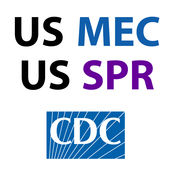-
Category Medical
-
Size 1.0 MB
The most commonly used method to predict clinical probability of pulmonary embolism, the Wells score, is a clinical prediction rule, whose use is complicated by multiple versions being available. In 1995, Philip Steven Wells, initially developed a prediction rule (based on a literature search) to predict the likelihood of PE, based on clinical criteria.
Wells Score PE alternatives
Contraception
The U.S. Medical Eligibility Criteria for Contraceptive Use comprises recommendations for the use of specific contraceptive methods by patients who have certain characteristics or medical conditions. The U.S. Although these recommendations are meant to serve as a source or clinical guidance, healthcare providers should always consider the individual clinical circumstances of each person seeking family planning services.
-
size 33.5 MB
HEART Pathway - Accelerated Chest Pain Risk Stratification Protocol for Emergency Medicine
A validated clinical decision tool for patients presenting to the Emergency Room with Chest Pain. Created by Wake Forest University School of Medicine Physicians. What is the likelihood that my patients presenting symptoms represent ACS?What is the likelihood that my patient will have an ACS event in the near future (within 30 days)?
-
rating 5.0
-
size 16.0 MB

SmartIntern: Sepsis 2016
SIRS criteria is so 2015 Recent changes published in JAMA (Feb 23, 2016) have revised the definition of sepsis. The proposal put forth by The Third International Consensus have recommended the transition away from SIRS criteria towards the more clinically relevant Sequential Organ Failure Assessment (SOFA) score. The app now suggests the ICD10 code of severe sepsis (R65.20) when the case fits into the sepsis of new definition (as suggested in JAMA 2016) + Minor bug fixes.
-
rating 4.83333
-
size 23.3 MB
MAQI2 Anticoagulation Toolkit
This mobile app provides healthcare practitioners with an up-to-date, easy-to-use resource for managing anticoagulation patients more safely and effectively. The content was developed by the Michigan Anticoagulation Quality Improvement Initiative (MAQI2), a Blue Cross Blue Shield/Blue Care Network of Michigan sponsored consortium of anticoagulation clinics and experts from across the state of Michigan, and is based on the latest guidelines and research.
-
size 3.7 MB



